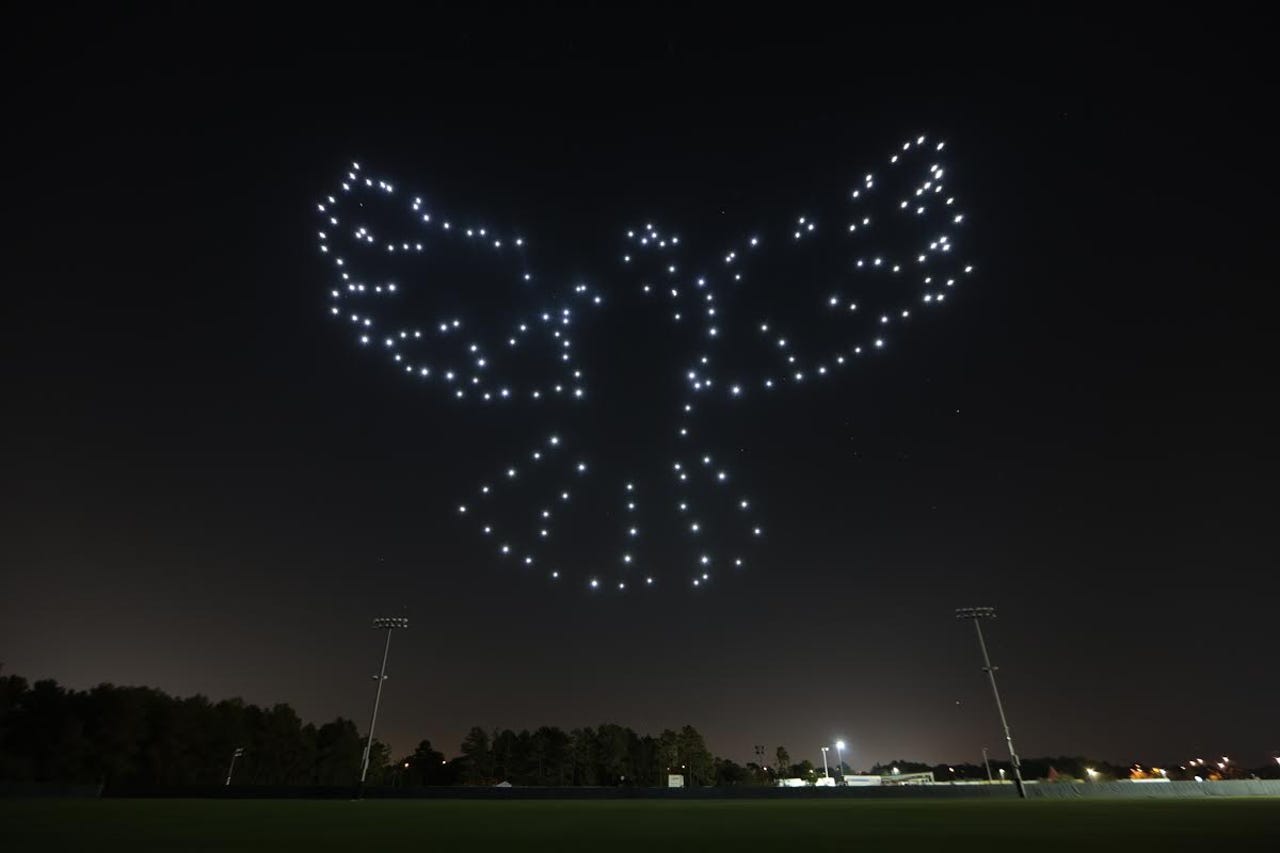Intel's Shooting Star light show drones make US debut


A figure of a dove created with Intel's Shooting Star drone system.
Intel's Shooting Star drones will head to the Walt Disney World Resort on Sunday for three weeks of nightly light shows at Disney Springs. The shows, which will feature 300 Intel Shooting Star drones in a choreographed aerial performance, marks the public debut of the Intel Shooting Star drone system in the US.
Featured
The Shooting Star system is a new type of unmanned aerial vehicle (UAV) specifically designed for entertainment purposes. Each quadcopter is constructed out of styrofoam and lightweight plastics, along with built-in LED lights that can create more than 4 billion color combinations.
Because the system's algorithms control the choreography and optimize the flight path, the entire fleet of 300 Shooting Star drones can be controlled by a single computer and operator -- a feat that could have larger implications for the rest of Intel's burgeoning drone portfolio.
'We see the ability to fly hundreds of drones with a single operator as something that easily could move into the inspection space," said Josh Walden, SVP & GM of Intel's New Technologies Group.
Among a bevy of available commercial drone applications, the ability to deploy a fleet of drones with one operator to inspect large structures such as cell towers, buildings, and bridges is still somewhat rare because of weaknesses in existing GPS technology. For the most part, GPS works just fine to get a drone from one place to another, but the technology faces challenges when it comes to getting drones close enough to a structure to capture high-resolution images.
Intel's Shooting Star drones rely on GPS, but the software alone could lead in to the more sophisticated, industrial applications.
"When we developed the platform, we did it so we could program the light show to a PC have the software manage the whole system," Walden said. "It's a highly automated process that previously took a lot more people and more time. The technology that we created which enables the Shooting Star light show could eventually be used to send out dozens of drones to do an inspection that much quicker."
As for the Walt Disney World Resort, the self-proclaimed "Happiest Place on Earth" gained approval from the Federal Aviation Administration earlier this month to fly drones within its parks. Disney's permission waiver from the FAA covers both its Florida and California theme parks and requires that drone operators have remote pilot certificates.
READ ALSO: